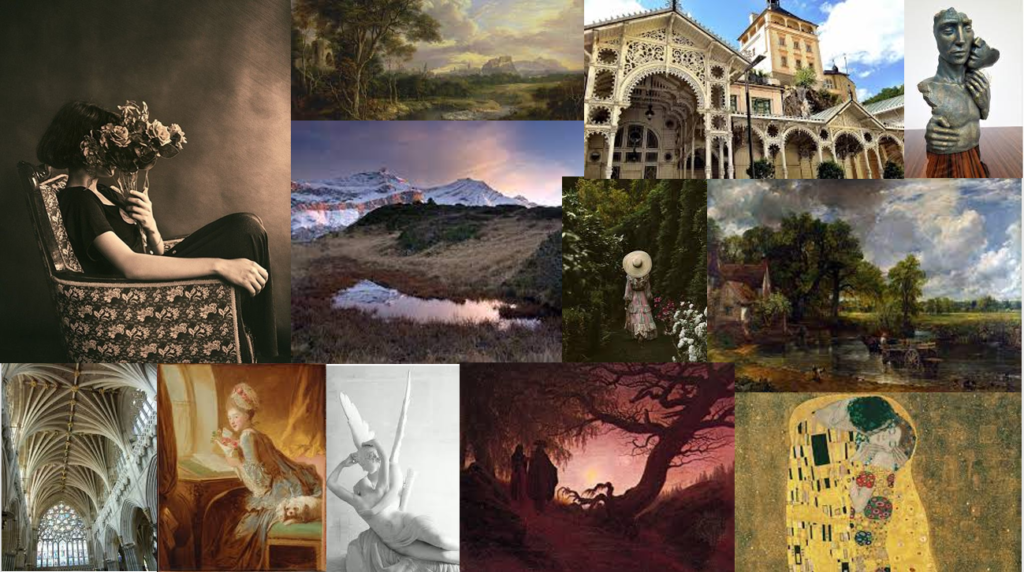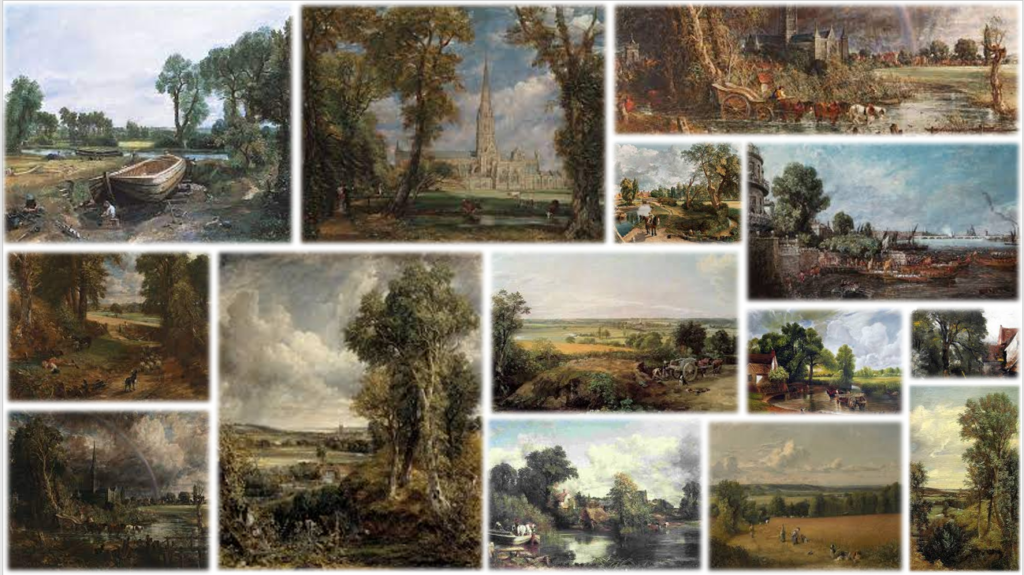
What is it?
Definition-a movement in the arts and literature that originated in the late 18th century, emphasizing inspiration, subjectivity, and the primacy of the individual.
romanticism can be seen as a rejection of the advancing times, a focus on the calm, harmonic and idealised. a romanticist would feel very strongly about representing the beauty of the world that is untouched by man.
typically romanticism is seen in paintings, this is because an artist would often idealise and paint now what they saw but what they wished they had.
romanticism was considered a rejection of the enlightenment period as the world focused on intellect and fast development
When did it develop?
During the first half of the 19th century, the Romantic movement blossomed across the arts, music, and history. Led by the likes of Caspar David Friedrich and William Blake, visual artists aimed to capture a transcendent union between nature, science, humanity, and the divine.
Why did it develop?
its emphasis on the imagination and emotion, Romanticism emerged as a response to the disillusionment with the Enlightenment values of reason and order in the aftermath of the French Revolution of 1789.
The early period of the Romantic era was a time of war, with the French Revolution (1789–1799) followed by the Napoleonic Wars until 1815. These wars, along with the political and social turmoil that went along with them, served as the background for Romanticism.
Examples of romanticists:
John constable- John Constable RA was an English landscape painter in the Romantic tradition. Born in Suffolk, he is known principally for revolutionising the genre of landscape painting with his pictures of Dedham
Born: April 23, 1775, Covent Garden, London, United Kingdom
Died: December 19, 1851 (age 76 years), Chelsea, London, United Kingdom
Period: Romanticism

JMW Turner- Joseph Mallord William Turner RA, known in his time as William Turner, was an English Romantic painter, printmaker and watercolourist. He is known for his expressive colouring, imaginative landscapes and turbulent, often violent marine paintings.
Born: April 23, 1775, Covent Garden, London, United Kingdom
Died: December 19, 1851 (age 76 years), Chelsea, London, United Kingdom
Period: Romanticism

The sublime
In aesthetics, the sublime is the quality of greatness, whether physical, moral, intellectual, metaphysical, aesthetic, spiritual, or artistic. The term especially refers to a greatness beyond all possibility of calculation, measurement, or imitation.
The theory of sublime art was put forward by Edmund Burke in A Philosophical Enquiry into the Origin of our Ideas of the Sublime and Beautiful published in 1757. He defined the sublime as an artistic effect productive of the strongest emotion the mind is capable of feeling.
